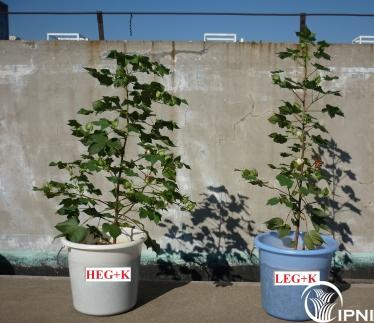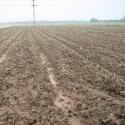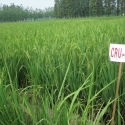20 Feb 2015
Study on the mechanism and technology for cotton high K nutrient use efficiency in Hubei

Cotton needs more potash than other major crops such as rice and wheat and it is sensitive to soil low potassium stress. Cotton is also one of the main cash crops in Hubei province with annual planting area of 450,000 hectares. In order to investigate differences of soil potassium absorption and utilization between two cotton genotypes (high and low potassium use efficiency cotton genotypes, named HEG and LEG), under drought and potassium stress, a greenhouse rhizosbox pot experiment was carried out by project cooperators in the Wuhan Botanical Garden of Chinese Academy of Science from May to October in 2011.
Two water levels (drought and suitable soil moisture: 25% and 35% of volumetric water content) and two potassium fertilizer rates (no potash and suitable potash rate supplementation: 0 and 0.48 g/kg soil) were arranged to study potassium forms and microbial counts in rhizospheric soil, and the cotton root morphology and potassium accumulation in cottons.
The results indicated that cotton genotypes showed significant difference in total potassium accumulation under potassium stress condition. The conversion of mineral potassium transfered into slowly available potassium (SAK) mainly drived by potassium absorption of cotton plant. In the fast growing stages of cotton, soil water condition played more important role than potassium fertilization. For example, in bolling stage, soil water stress reduced cotton photosynthesis and transpiration rate significantly. Drought significantly reduced the effect of potassium fertilization and then limited cotton growth and potassium use efficiency. The water use efficiency, root morphology and soil microbial counts were markedly varied between HEG and LEG cotton genotypes. With the increase of potassium fertilization rate, contton’s rate of net photosynthesis was increased for LEG but no response from HEG. Compare with LEG, the HEG has more developed and efficient root system with higher density, thick and longer root hairs, much more active microbe in rhizosphere soil. HEG also producedmore cotton biomass, more bolls and less fall leaves and fall bolls. LEG has higher ABA content and cellulase activity, but IAA, GAs and Z+ZR contents were lower than HEG. The difference between these two genotypes mainly comes from their K translocation efficiency within cotton organs, rather than soil K uptake efficiency. This study improved our understanding on the mechanism of plant potassium use efficiency.




